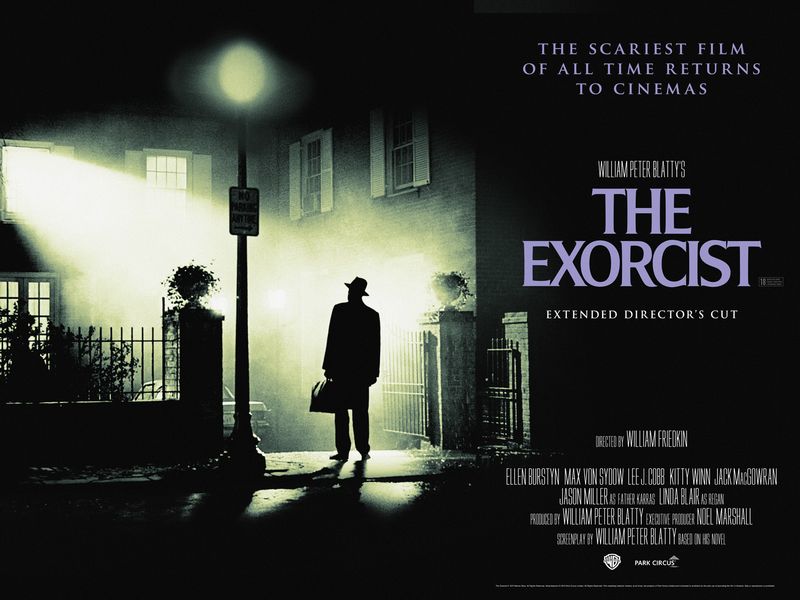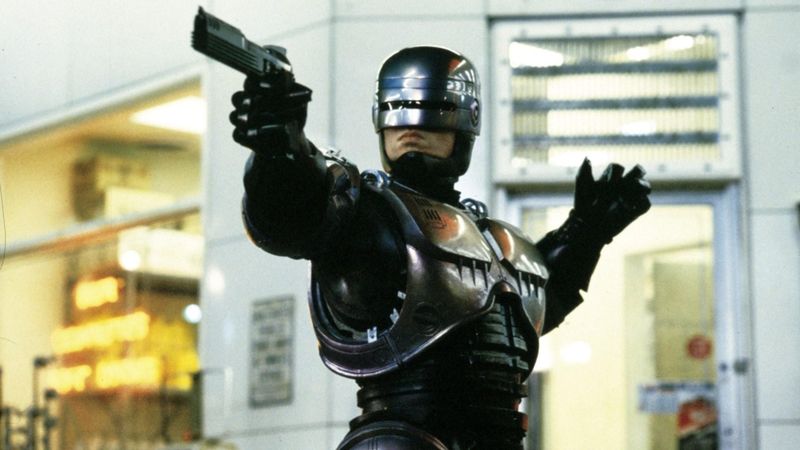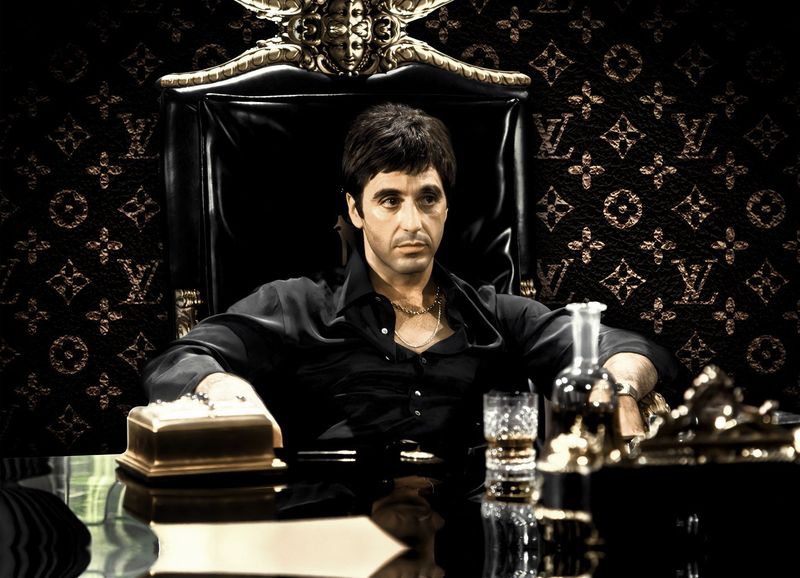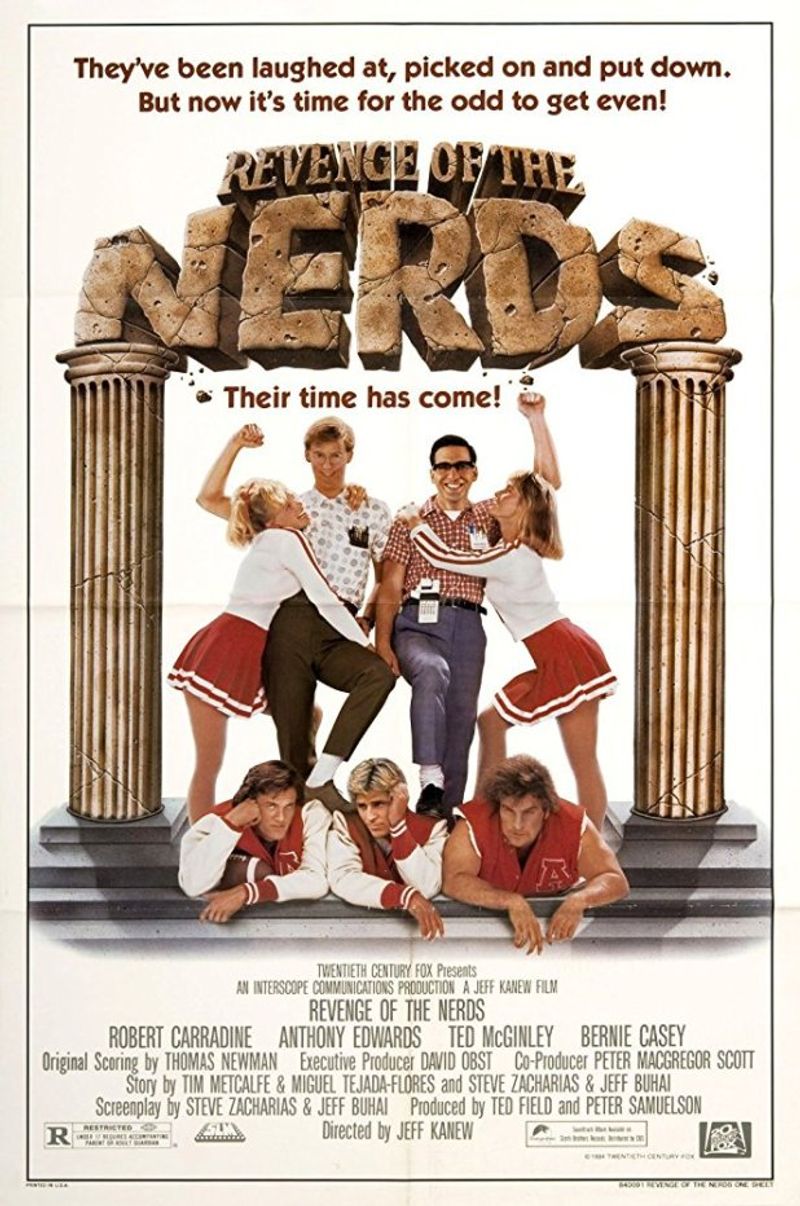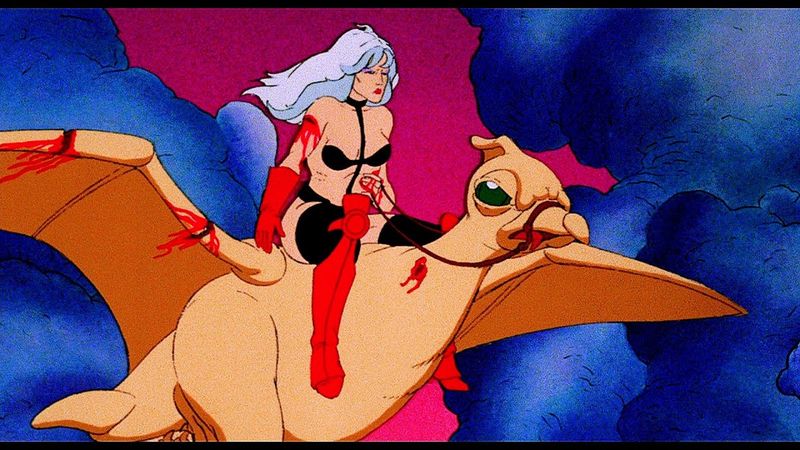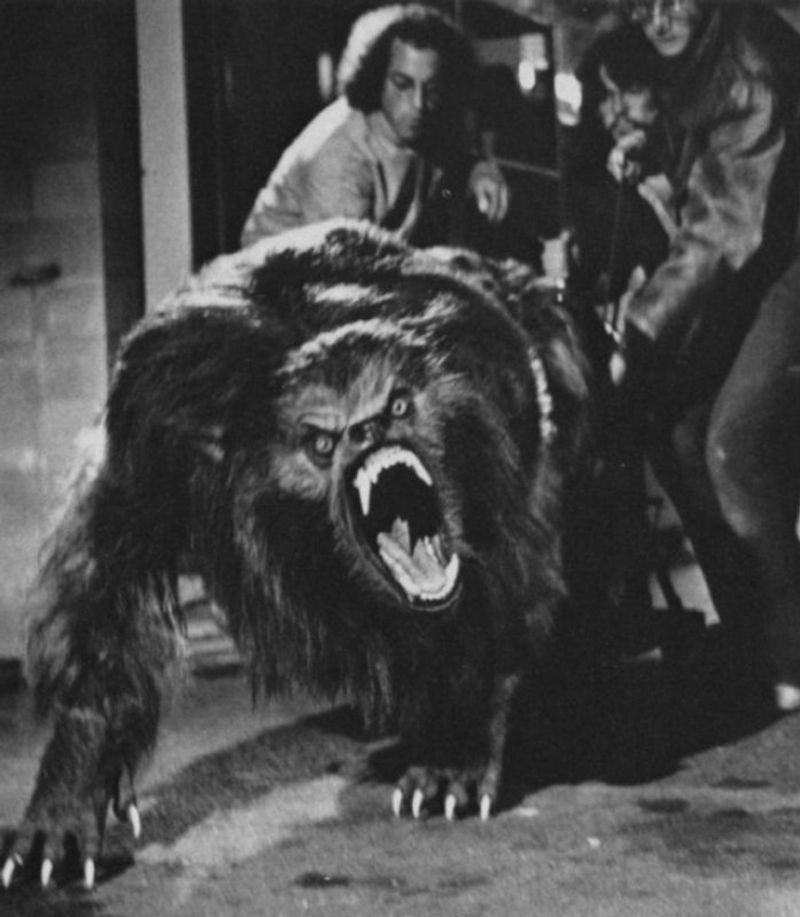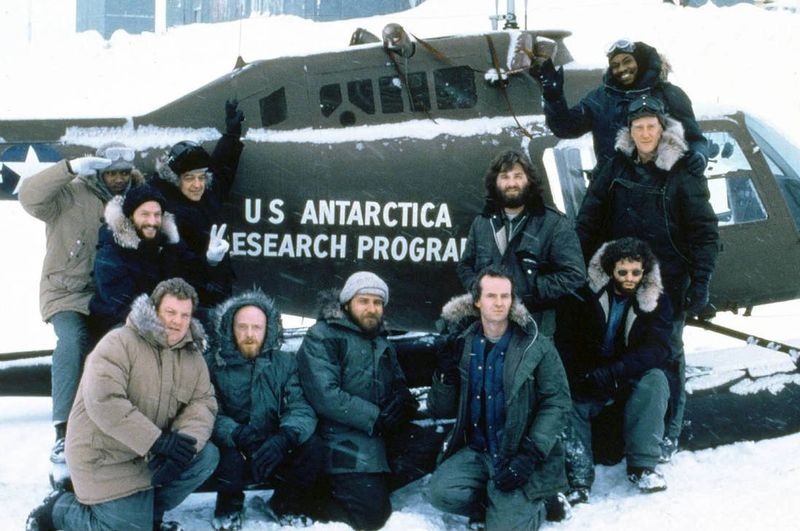The 1980s were a golden age for boundary-pushing cinema that left many kids begging their parents for a chance to watch the forbidden fruit of Hollywood. While our friends whispered about chainsaw massacres and demon possessions at recess, most of us were stuck with G-rated fare that wouldn’t give us nightmares. These films represented the ultimate childhood rebellion – the movies we’d sneak downstairs to watch after our parents went to bed, or brag about seeing even if we hadn’t.
1. Poltergeist (1982)
“They’re heeeere!” echoed through playgrounds as kids who’d actually seen this supernatural thriller tormented those who hadn’t. Despite its PG rating (this was before PG-13 existed), Poltergeist packed enough nightmare fuel to last a childhood. That creepy clown doll. The swimming pool filled with skeletons. The guy who peels his own face off in the bathroom mirror. Parents weren’t fooled by the rating – they knew their kids would be sleeping with the lights on for months. Ironically, the film’s scariest elements weren’t the ghosts but the ordinary objects made menacing: television sets, toys, and trees outside the window. No wonder so many ’80s kids developed strange bedroom rituals to keep the monsters away.
2. The Exorcist (1973)
Though released in the ’70s, The Exorcist maintained its reputation as the ultimate parental no-no throughout the ’80s. Most kids only knew it through playground rumors about a girl whose head spun around and who projectile-vomited pea soup. The film’s realistic portrayal of demonic possession felt too plausible for comfort. Religious families particularly banned this one, fearing it might invite evil spirits into their homes just by watching it. Even the film’s marketing leaned into its forbidden nature. For many ’80s kids, finally seeing The Exorcist became a rite of passage into adulthood. The actual viewing rarely lived up to the decade of buildup, but the psychological damage was already done through imagination alone.
3. A Nightmare on Elm Street (1984)
Freddy Krueger slashed his way into ’80s pop culture, but many kids only knew him from the playground chant: “One, two, Freddy’s coming for you…” The premise was diabolically simple – fall asleep, and you die. For children already afraid of the dark, this was psychological warfare. The burned man with razor fingers who killed teenagers in their dreams turned bedtime into a battleground between parents and frightened kids. Slumber parties became danger zones where brave (or foolish) hosts might sneak in a VHS copy. What made Freddy particularly terrifying was his twisted sense of humor. Unlike silent killers like Jason, Freddy taunted his victims, making him seem more intelligent and therefore more frightening to impressionable young minds.
4. Friday the 13th (1980)
Summer camp took on a sinister edge after Jason Voorhees started his reign of terror at Crystal Lake. The hockey mask became an iconic symbol of fear that even kids who’d never seen the film recognized instantly. Parents panicked at the film’s formula: teenagers + sex = violent death. The message seemed clear – teen rebellion leads to getting impaled on something sharp. Many families actually canceled camp plans after the film’s release, much to their children’s relief. Most ’80s kids knew the basic plot through cultural osmosis: a drowned boy seeking revenge on camp counselors. The original film’s twist (it was actually Jason’s mother doing the killing) was often lost in playground retellings, where Jason himself became the bogeyman lurking in cabin shadows.
5. RoboCop (1987)
RoboCop’s action figure fooled parents into thinking this was kid-friendly sci-fi. The reality? One of the most violent mainstream films of the decade, featuring a scene where a businessman melts after being doused with toxic waste. Kids begged to see it for the cool robot policeman, but parents who did their homework discovered a hard-R rating with graphic violence that made even adults squirm. The film’s Detroit dystopia felt uncomfortably possible to Reagan-era adults. The most notorious scene – where Officer Murphy is brutally gunned down before becoming RoboCop – was playground legend. The film’s biting corporate satire went over kids’ heads, but the ultraviolence wouldn’t have. No wonder parents kept saying, “I’d buy that for a dollar” – but not a movie ticket for their children.
6. The Terminator (1984)
Arnold Schwarzenegger’s iconic line “I’ll be back” was repeated by kids who’d never seen the film. The Terminator’s premise – an unstoppable killing machine from the future – was simple enough for playground retellings, but the film itself was firmly off-limits. The opening scene alone, featuring a naked Arnold arriving in 1984 before killing a punk for his clothes, ensured this wouldn’t be family viewing. Parents balked at the relentless violence as the T-800 methodically eliminated anyone between it and Sarah Connor. James Cameron’s tech-noir masterpiece sparked countless nightmares about robots disguised as humans. The film’s realistic portrayal of a future where machines hunt humans tapped into Cold War anxieties about technology gone wrong – fears that resonated with adults but would have traumatized ’80s kids.
7. Scarface (1983)
“Say hello to my little friend!” became an ’80s catchphrase that kids repeated without understanding the context. Scarface wasn’t just banned for children – many parents considered it too extreme even for themselves. The chainsaw scene early in the film set the tone for Brian De Palma’s ultraviolent gangster epic. Tony Montana’s rise and fall featured mountains of cocaine, countless shootings, and language that would get kids grounded for a month. The film’s glamorization of the drug trade particularly worried parents during the “Just Say No” era. By the ’90s, Scarface posters adorned college dorms nationwide, but in the ’80s, even the VHS box was considered too provocative for young eyes. The film’s cultural impact vastly outweighed its actual viewership among kids of the era.
8. Revenge of the Nerds (1984)
Marketed as a comedy about underdogs triumphing, Revenge of the Nerds was actually a raunchy sex comedy that horrified parents who made the mistake of renting it for family movie night. The film’s panty raids, nude scenes, and questionable sexual politics made it a definite no-go. Kids who glimpsed commercials saw only the slapstick elements – nerds getting revenge on jocks. What they didn’t see was the graphic nudity, drug use, and a scene involving a character disguising himself to have sex with someone – something recognized today as sexual assault. The film spawned a franchise and became a cultural touchstone for ’80s college humor, but its content ensured it remained firmly in the “watch at your friend’s house whose parents don’t check the VHS tapes” category for most ’80s kids.
9. Fast Times at Ridgemont High (1982)
Phoebe Cates emerging from a swimming pool became one of the most paused VHS moments in history – and exactly why parents kept this teen comedy away from impressionable eyes. Fast Times presented high school as parents feared it actually was: full of sex, drugs, and rock ‘n’ roll. The film tackled serious issues like abortion, alongside Sean Penn’s iconic stoner Jeff Spicoli ordering pizza to class. Based on Cameron Crowe’s undercover reporting at a real high school, it had an authenticity that terrified parents. Many worried it would serve as a how-to manual rather than a cautionary tale. Most ’80s kids only knew it as “that movie with the pool scene” until they were old enough to rent it themselves. By then, the cultural references had become so embedded in popular culture that finally watching it felt like filling in missing pieces of their adolescence.
10. Heavy Metal (1981)
An animated film that was definitely not for Saturday morning cartoons, Heavy Metal combined sci-fi, fantasy, and rock music with generous amounts of nudity and graphic violence. The anthology format meant there was something to offend everyone. Parents who saw cartoon characters on the VHS cover and assumed it was kid-friendly were in for a shock. The film’s segments featured everything from zombie pilots to alien sex scenes, all set to a headbanging soundtrack. The animation style itself was sophisticated and aimed at adult audiences. Heavy Metal achieved legendary status precisely because it was forbidden. Its fantasy worlds of warrior women and cosmic adventures appealed to adolescent imaginations, while the mature content ensured parents kept it locked away. For many ’80s teens, finding a way to watch it became a quest worthy of the film’s own heroic narratives.
11. The Evil Dead (1981)
Sam Raimi’s low-budget horror masterpiece earned its ban in households nationwide through sheer, relentless terror. The premise was simple: five friends in a cabin unwittingly release demons. What followed was anything but simple. The notorious “tree scene” alone was enough to get this on the parental blacklist. Add in possessed friends, dismemberment by shovel, and buckets of theatrical blood, and you had a film that defined the video nasty era. The practical effects, while primitive by today’s standards, had a visceral quality that haunted viewers. Bruce Campbell’s Ash would later become a chainsaw-wielding hero in the increasingly campy sequels, but the original remained pure nightmare fuel. For many ’80s kids, the forbidden VHS tape with its menacing cover art represented the ultimate horror challenge – if you dared.
12. Cujo (1983)
Stephen King’s story about a rabid St. Bernard trapping a mother and son in a Ford Pinto turned the family dog into a source of terror. Parents who allowed their children to read King’s novels often drew the line at seeing his horrors visualized on screen. The film’s power came from its plausibility – no supernatural elements, just a sick dog and a broken-down car. For families with large dogs, Cujo was especially forbidden. Many children reported checking their pets for signs of rabies after merely hearing about the film. The claustrophobic car scenes, where Dee Wallace and her young son slowly dehydrate while Cujo repeatedly attacks, created tension that was too intense for young viewers. The film’s relatively realistic premise made it scarier than monsters or aliens – this could actually happen, and that was the most frightening thought of all.
13. Gremlins (1984)
Gremlins occupied a strange middle ground – marketed with toys and McDonald’s tie-ins but containing scenes that traumatized younger viewers. The cute Mogwai turning into murderous monsters after midnight was a bait-and-switch that caught many parents off guard. The microwave scene. The blender scene. The Christmas tree attack. These moments of startling violence, played with dark humor, helped create the PG-13 rating (along with Indiana Jones and the Temple of Doom). Parents who took young children to see the cute creature on the poster were unprepared for the horror-comedy that followed. Most shocking was the scene where Kate explains why she hates Christmas – her father dressed as Santa, got stuck in the chimney, and died. This macabre story, delivered in an otherwise lighthearted film, exemplified why Gremlins became notorious for traumatizing an entire generation of ’80s kids who did manage to see it.
14. The Texas Chainsaw Massacre (1974)
The title alone was enough to get this banned from most households. Though released in the ’70s, Tobe Hooper’s masterpiece of terror maintained its forbidden status throughout the ’80s, becoming the horror film with the most terrifying reputation. Most kids who claimed to have seen it were lying. The film’s documentary-style approach and claims of being “based on true events” gave it an air of authenticity that made parents especially wary. Leatherface and his family of cannibals represented rural horror that felt too possible to many suburban families. Ironically, the film contains relatively little graphic violence – its power comes from suggestion and atmosphere. The dinner scene, where a captured girl is tormented by the deranged family, created psychological horror that no amount of gore could match. For ’80s kids, even the VHS box art was nightmare-inducing.
15. Blue Velvet (1986)
David Lynch’s surreal masterpiece explored the dark underbelly beneath small-town America’s picket fences. Parents who stumbled upon this thinking it was a mystery or thriller quickly shut it off when Dennis Hopper’s Frank Booth appeared, huffing gas and engaging in bizarre sexual violence. The film’s dreamlike quality and disturbing imagery made it inappropriate for young viewers on multiple levels. Isabella Rossellini’s vulnerable performance as Dorothy Vallens, forced into sexual servitude to save her kidnapped son, created scenes too complex and disturbing for children to process. Blue Velvet represented art-house horror that concerned parents not just for its content but for its tone. Unlike slasher films with clear villains, Lynch’s work presented a morally ambiguous world where darkness existed within seemingly normal people. This psychological complexity made it far more disturbing than straightforward horror.
16. An American Werewolf in London (1981)
John Landis blended horror and comedy in this tale of an American tourist transformed into a werewolf. Parents weren’t fooled by the humorous elements – the transformation scene alone, with its agonizing realism, earned this film a spot on the forbidden list. Rick Baker’s groundbreaking special effects showed a man painfully turning into a wolf without camera cuts or shadows. Bones cracked, skin stretched, and hair sprouted in full view, creating body horror that was too intense for young viewers. The dream sequences featuring Nazi monsters added another layer of nightmare fuel. The film’s decaying ghost character, Jack, who appears progressively more rotted throughout the movie, particularly disturbed younger viewers who caught glimpses. The sight of a cheerful man gradually decomposing while maintaining his sense of humor created a disturbing juxtaposition that lingered in the imagination.
17. Hellraiser (1987)
Clive Barker’s vision of hell featured interdimensional demons in leather with a fondness for hooks, chains, and creative torture. Pinhead became an iconic horror figure, but parents made sure his puzzle box stayed out of children’s hands. The film’s exploration of pleasure and pain crossed boundaries that even other horror movies respected. The resurrection scene, where a skinless man gradually regains his form through his brother’s blood sacrifices, created visceral body horror. Religious families particularly objected to the film’s reimagining of demons and damnation. What made Hellraiser particularly forbidden was its sexual undertones. Unlike slasher films where sex led to death, Hellraiser suggested pain and pleasure might be interconnected in disturbing ways. This adult theme, combined with graphic gore and disturbing imagery, ensured kids would only hear whispered descriptions of the Cenobites rather than see them firsthand.
18. Porky’s (1981)
The teen sex comedy that launched a thousand imitators, Porky’s focused on high school boys attempting to lose their virginity – a premise guaranteed to keep it off family movie night. The shower scene, where boys spy on naked girls through a hole in the wall, became infamous. Parents feared this Canadian export would give their sons ideas and objectify their daughters. Set in the 1950s but reflecting ’80s sexual attitudes, the film celebrated juvenile behavior that most adults were trying to discourage. The raunchy humor and constant sexual references made this a definite parental no-go. The film’s massive box office success (it was one of 1982’s highest-grossing films) showed the appetite for teen comedies, but also ensured parents were on high alert. Porky’s represented everything conservative parents feared about teenage rebellion, making it forbidden fruit for curious adolescents throughout the decade.
19. The Thing (1982)
John Carpenter’s masterpiece of paranoia featured an alien that could perfectly imitate any living organism – including humans. The practical effects by Rob Bottin, showing bodies grotesquely transforming and melding together, were too realistic and disturbing for young viewers. The blood test scene, the spider-head, the chest defibrillation – each sequence contained nightmare-inducing body horror. Parents who valued their children’s sleep patterns kept this film far away. The Antarctic setting created isolation that amplified the horror, making viewers feel as trapped as the characters. Despite being a commercial disappointment in 1982 (partly due to competition from E.T.’s friendlier alien), The Thing gained legendary status through VHS rentals. Its influence grew throughout the decade, but mostly among teenagers and adults. For most ’80s kids, it remained the film they weren’t allowed to watch – but desperately wanted to.
20. Mad Max 2: The Road Warrior (1981)
The post-apocalyptic wasteland of Mad Max presented a violent future where gasoline was more valuable than human life. Parents worried about the film’s brutal vision and its influence on impressionable minds. The Road Warrior’s iconic car chases featured real stunts with people actually being thrown from vehicles at high speeds. This authentic danger, combined with the film’s unflinching violence and grim worldview, kept it firmly in adult territory. The feral child character particularly disturbed parents – a wild boy who communicated through growls and killed without remorse. Though tame by today’s standards, the film’s mohawked punks, leather-clad bikers, and casual brutality represented everything conservative parents feared about counterculture influences. The villain’s hockey mask predated Friday the 13th Part 3’s Jason, creating another iconic image that found its way onto schoolyard lunchboxes despite parents’ best efforts.
21. Alien (1979)
“In space, no one can hear you scream” – unless you’re a kid watching this sci-fi horror classic, in which case your parents definitely could. Though released in 1979, Ridley Scott’s masterpiece of cosmic terror continued terrifying ’80s children who managed to see it. The chestburster scene alone guaranteed this film’s adult-only status. John Hurt’s convulsions as an alien erupts from his ribcage created primal horror that transcended age ratings. Parents who allowed Star Wars viewing drew a hard line at Alien, despite both being space adventures. H.R. Giger’s biomechanical creature design, with its distinctly sexual undertones, created an alien that wasn’t just scary but deeply disturbing on a subconscious level. The film’s claustrophobic setting aboard the Nostromo, where escape was impossible, mirrored children’s own feelings of helplessness when confronted with adult terrors they weren’t ready to process.


